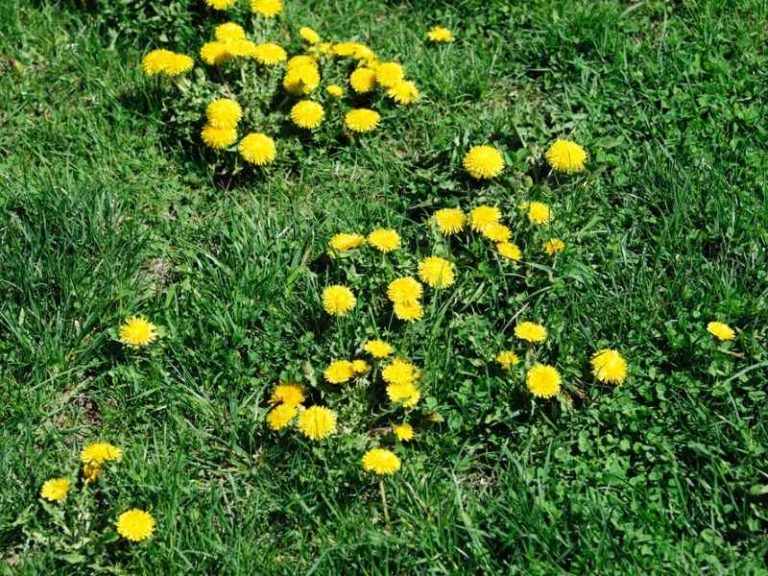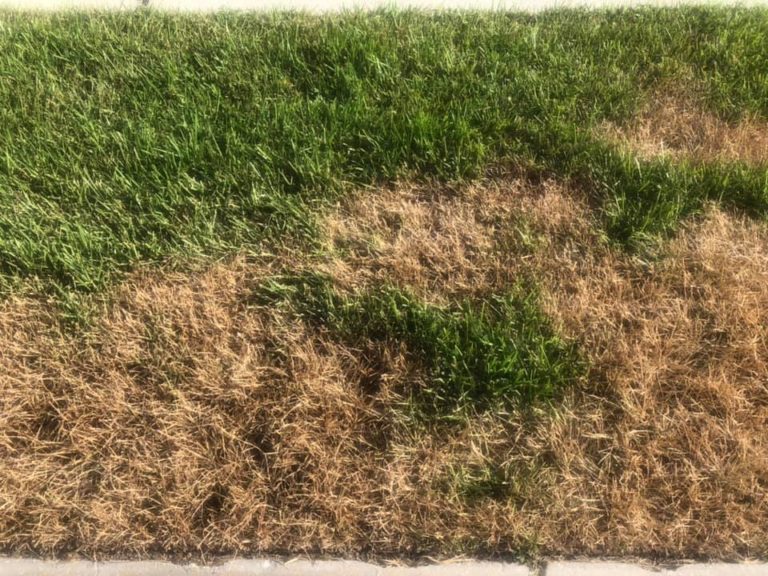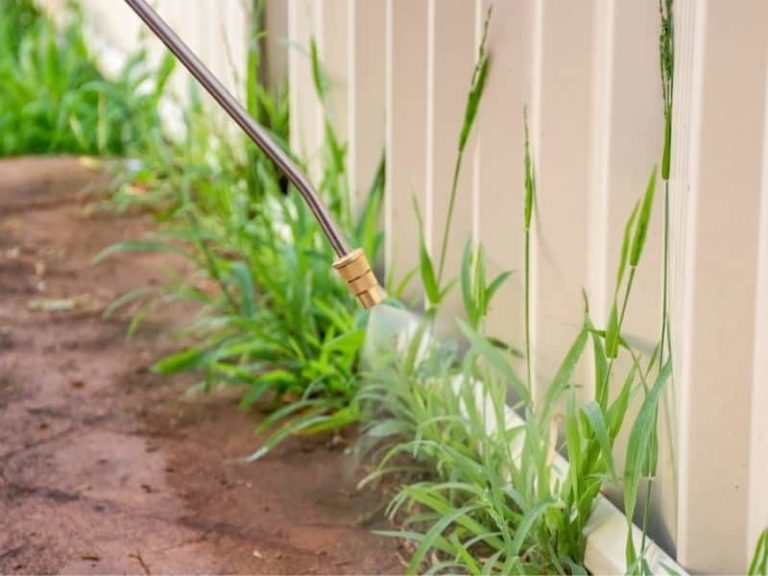Quackgrass vs. Crabgrass: Differences + Identification
Quackgrass and crabgrass are both grassy weeds commonly found on lawns across the country. If you’re finding it difficult to tell these two apart, you can check out the blade, shoot, and root features; as well as the growth habit. Other differentiating aspects include their seasonality and control methods.
What does quackgrass look like?
Quackgrass, also known as Elymus repens or couch grass, is a grassy weed species whose leaves are blue-green in color and are tapered at the tips. The blades are also long, wide, and often curl longitudinally. Quackgrass is a deep-rooting grassy weed, hence is difficult to uproot by hand.
Note: Quackgrass has a hollow stem, which the grass blades curl around.
One of the most distinctive identifying features of quackgrass is that it has clasping auricles. Meanwhile, its basal sheaths are hairy, with the upper ones having a smooth texture. Quackgrass has folded vernation and tiny ligules that have membranes.
Note: The sheath hairs on quackgrass typically disappear in the summer, and are most prominent in the spring.
Quackgrass grows via underground rhizomes to quickly spread and cover bare spots on lawns. When you uproot it, you’ll notice pale white root-like structures, which are the rhizomes.
This grass species also exhibits extensive vertical growth, often growing longer than normal turf whenever it invades a lawn. Upon first look, you may even confuse it for tall fescue.
What does crabgrass look like?
Crabgrass is an annual grassy weed that falls under the genus Digitaria and has a light green shade that usually contrasts with the dark green shade of most normal turf grasses. It has a low growth profile and stays closer to the ground on lawns. A single crabgrass plant sprouts multiple stems, while the grass blades are wide, flat, and have tapered tips.
Note: The stems grow laterally, bend at the nodes, and have a red shade in some cases.
There are two types of crabgrass, hairy and smooth, with the latter being the most common invader on lawns. Smooth crabgrass is so called because it only has hair on the auricles. Hairy crabgrass, on the other hand, features hairs all over the blades and stems.
Smooth crabgrass typically grows to a height of no more than 6 inches, with the leaves taking up as much as 5 inches. This is usually a tad bit shorter than hairy crabgrass. Meanwhile, crabgrass stalks, are long and have a tough feel. You’ll notice flower clusters at the tip of these stalks.
Being as it’s a drought-hardy grassy weed, crabgrass typically sprouts in the summer when it’s hot. It’s also due to this reason that you’ll notice crabgrass remaining green up until late summer when the rest of the lawn has already turned brown.
This annual grass usually dies upon the advent of frosty weather in the fall, but usually produces enough seeds by then to see it through the next life cycle. The good news, though, is that this grass species only spreads via seed. You, therefore, don’t have to worry about underground rhizomes helping the weed gain further ground in your lawn.
Crabgrass vs Quackgrass – Differences
Crabgrass and quackgrass differ in terms of appearance, growth habit, control methods, and seasonality.
Growth Pattern
Crabgrass has a clumpy growth pattern whereby the shoots grow laterally in a crab-like pattern. This grass species has a shallow root system and a low growth profile with minimal vertical growth. Quackgrass, on the other hand, grows via deep-rooting, creeping underground runners, quickly spreading to new areas.
Seasonality
Crabgrass is a warm-season, annual grass variety that usually dies out at the end of the growing season in the fall. By comparison, quackgrass is a cool-season perennial that can live through multiple seasons.
Control Methods
Quackgrass is harder to eliminate compared to crabgrass. The latter can be controlled using a post-emergent herbicide or be prevented from sprouting using a pre-emergent weed killer. Comparatively, quackgrass can only be killed by spot-treating affected lawn areas using a non-selective weed killer.
Grass Blades
Quackgrass blades are blue green in color, while crabgrass blades are light-green (lime green).
The table below summarizes the differences between quackgrass and crabgrass:
| Quackgrass | Crabgrass |
| Quackgrass grows via rhizomes to form thick sod. | Crabgrass only grows via tillers to form clumpy grass. |
| A cool-season, perennial weed grass | A warm-season, annual weed grass |
| Quackgrass can only the controlled by selective treatment with a post-emergent, non-selective herbicide | Crabgrass can be killed using both pre-emergent and post-emergent herbicides |
| Blue-green grass blades | Lime green/ light green grass blades |
Herbicides for Quackgrass Control
The most effective way to control quackgrass is by using a non-selective herbicide. One common non-selective weed killer is Round-Up, a product which contains glyphosate as the main active ingredient. Glyphosate will kill all kinds of vegetation that it comes into contact with, including your turf grass, and should thus be used with caution.
One of the most practicable ways to apply glyphosate without damaging your turf is by spot-treating the quackgrass-infested spots on the lawn. You can do this by soaking up a sponge with a glyphosate product and then wiping the quackgrass blades. While doing so, take extra caution to avoid dripping the weed-killer onto your desirable turf grass.
Despite your best efforts, it’s likely that you’ll still burn sections of your turf due to accidental contact with the Round-Up/glyphosate. To correct this, overseed the problem areas to facilitate new growth and finally end up with a quackgrass-free lawn.
Crabgrass Control Methods
You can control crabgrass before they emerge by applying a pre-emergent herbicide that inhibit crabgrass seeds on your lawn from sprouting into shoots/seedlings. Premium-quality pre-emergents can prevent crabgrass emergence for up to half a year on a single application. They’re best applied in early spring before crabgrass emerges in the spring/summer.
Take note, though, that pre-emergent weed killer may also kill grass seed as well. You should, therefore, avoid using such products if you’d recently overseeded your lawn. Ideally, you should wait until the seeds germinate and the new seedlings are fully established.
Note: Also, don’t overseed until at least two months after using a pre-emergent herbicide for crabgrass, as it takes time for the weed killer to dissociate in the soil.
And as for crabgrass weeds that are already existing on your lawn, your best bet is a non-selective, post-emergent herbicide. These can kill both broadleaf weeds and grassy weeds. Avoid selective herbicides that are formulated to kill broadleaves but not grassy weeds like crabgrass.
Note: Most weed and feed products won’t eliminate crabgrass, as they typically contain selective herbicide ingredients.

![When to Apply Crabgrass Preventer [Before or After Rain?]](https://lawnmodel.com/wp-content/uploads/2021/03/When-to-apply-crabgrass-preventer-min.jpg)



